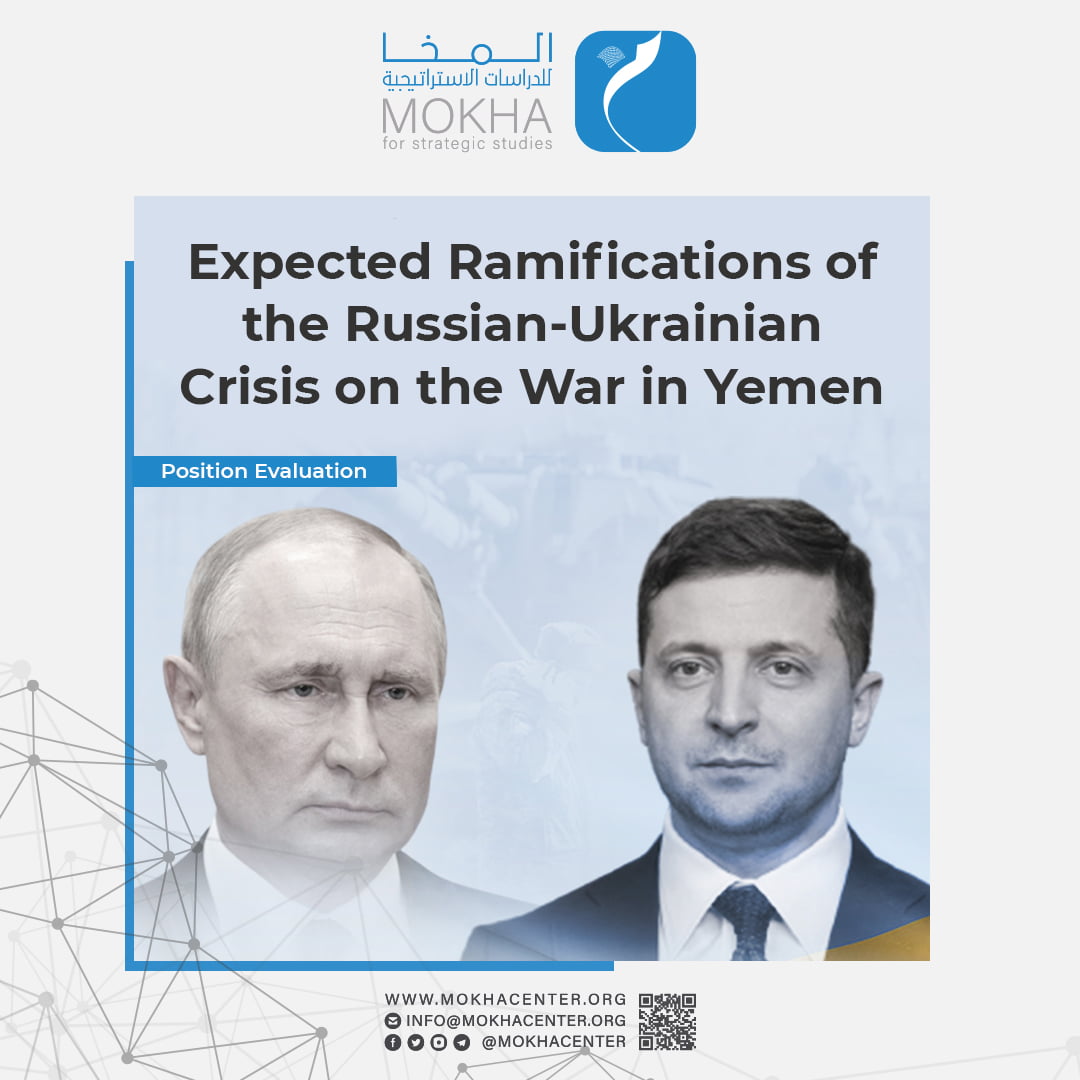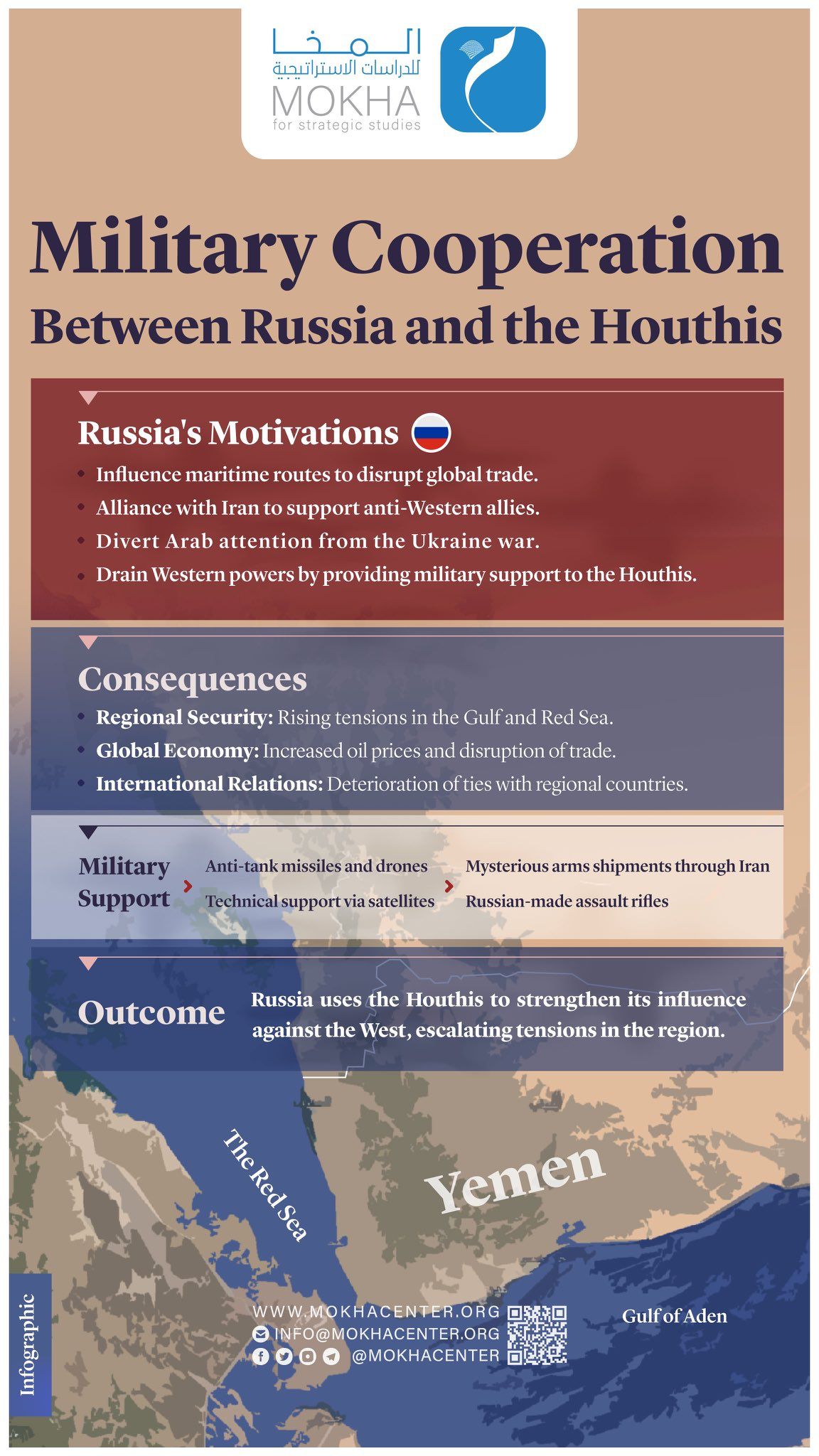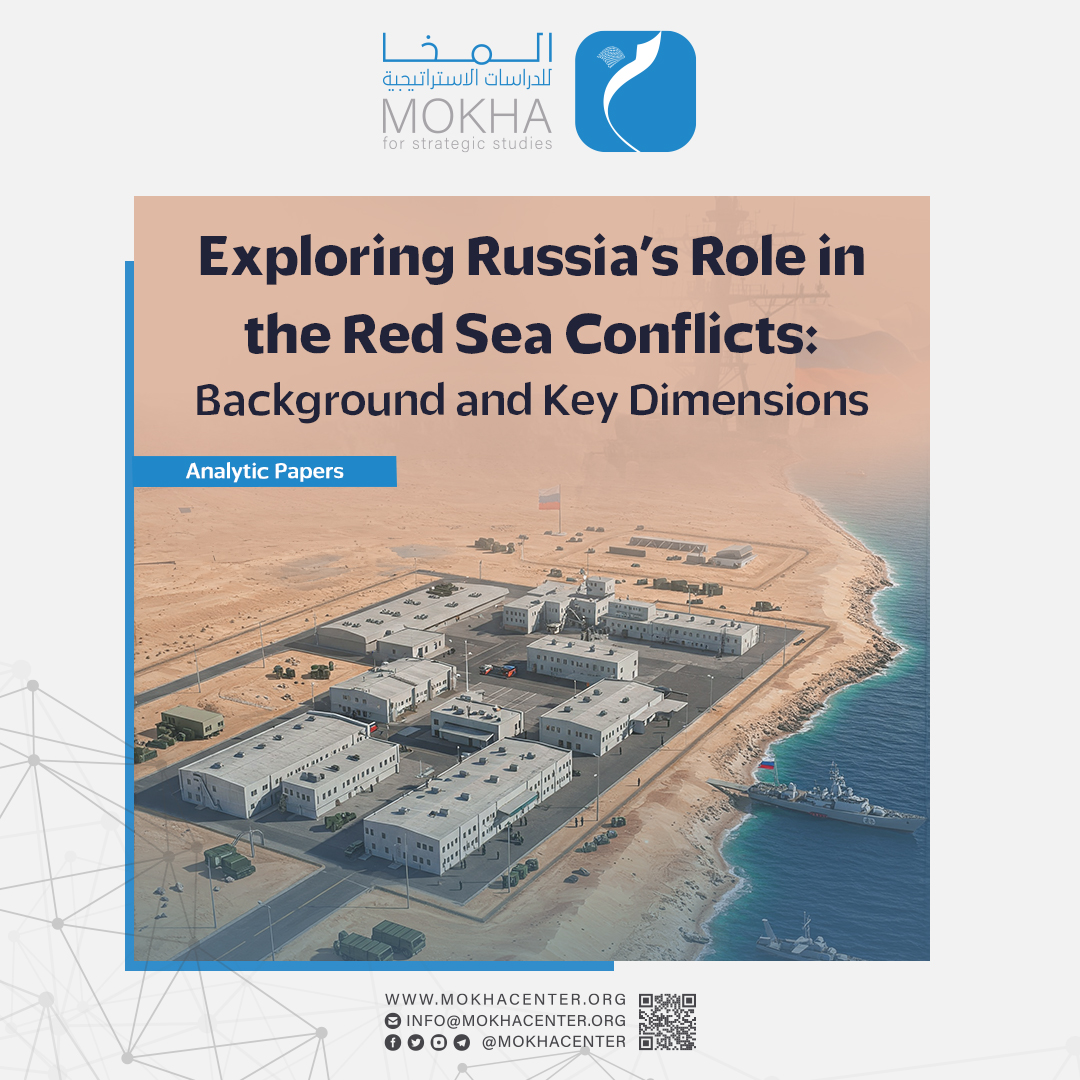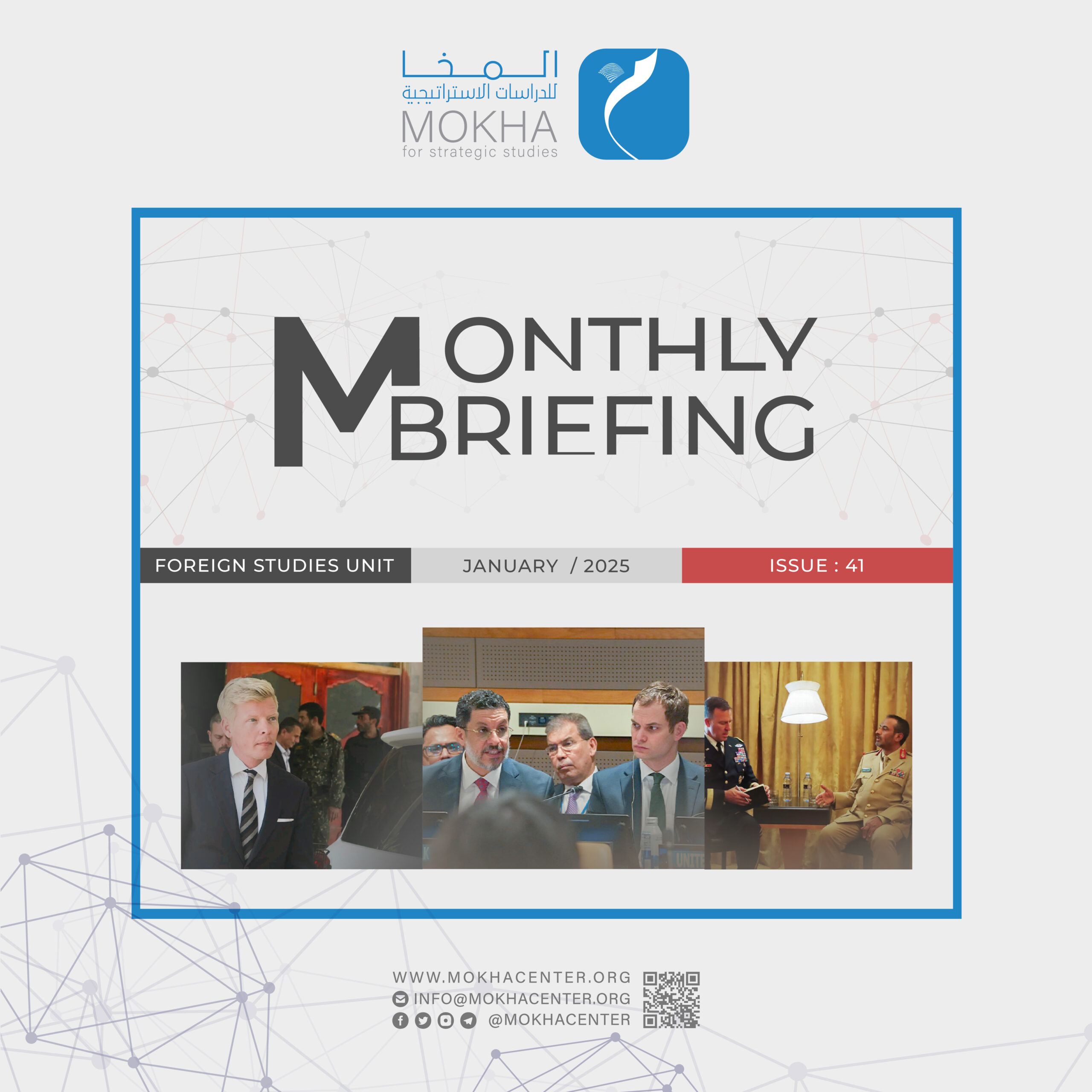Expected Ramifications of the Russian-Ukrainian Crisis on the War in Yem

| Getting your Trinity Audio player ready... |
The Russian-Ukrainian crisis is hurtling towards the brink of a war with an unclear ending, even if the other involved sides are well-known, at the head of which are the United States of America and NATO alliance on the side of the Ukraine. Perhaps, what determined the crisis is the hardening of the Russian position in its demands, and its recent recognition of the two Donetsk and Lugansk separatist regions as two separate republics from Ukraine, as a preamble, so it appears, to merging with the Russian Union.
Perhaps, that both sides in the crisis held on to uncompromising strategic determinants will prove costly, regardless of whoever benefits in the end or benefits the most, not only at the level of Russia and Ukraine, rather even at the level of the surrounding regional countries. The geostrategic dimensions of the conflict extend towards the Middle East region, and especially its high tension regions, including Yemen, the subject of this report.
Background of the Crisis and its Contexts:
The Russian-Ukrainian crisis can be evaluated at three levels: the domestic level of the two countries, the regional level, and international level or the global system, each level of which is concerned with security assessments as well. On the domestic level, the crisis is prominent as extending from the ramifications of the collapse of the Soviet Union in 1991, of which the Ukrainian republic was an important part. Ukraine, like the rest of the republics liberated from Soviet hegemony, strengthened its economic and political independence from Moscow, but finally ended up in the West’s embrace, especially the European Union, NATO and the United States, which for its part is attempting to take advantage of Ukraine’s geo-strategic location to approach Russia. Ukraine is a point of critical and direct contact with Russia, especially if NATO was able to establish military bases in Ukraine.
As an extension of that, the crisis’ regional and international levels have been characterized by a severe and complicated overlap with its domestic level. Moscow, in the context of attempts of regaining hegemony or stopping NATO’s approach towards its territory, has found that the first measures it should take is to impede the Ukrainian rush towards the West, and ensure the West will remain a safe distance from Russia behind its Western geographical wall, and beyond the Black Sea and the Mediterranean. Russia laid the foundation for this by cutting off the Crimea Peninsula from Ukraine in 2014, following the events of the popular revolution which overthrew the pro-Russian regime and established a new pro-Western regime.
This was followed by Moscow fanning conflict in the Donetsk and Lugansk regions in Ukraine’s southeastern borders, until events reached the unjust “Minsk” settlement in 2015, the basis of which was agreed upon in 2014. Moscow was a side of this settlement, in addition to the separatists in the conflict areas, whereas Ukraine was on the other side, with the Organization for Security and Co-operation in Europe (OSCE) playing an active mediating role throughout this conflict.
Practically speaking, Russia strengthened its military presence in the eastern part of Ukraine, through the adjacent territory and its indirect military presence in the separatist region of Donbass, the Crimea peninsula, Northwest Black Sea and the Ozov Sea. This is was also shown by the amount of troops that Russia deployed, including more than one hundred thousand soldiers on the borders between the two countries, the installation of the Russian S-400 defense system, and hundreds of combat jets and helicopters along Ukraine’s eastern and southern geographic arc, including the territories of Belarus. This is not to mention the heavy activity of its bases in the Mediterranean (for example in Syria) and the Eastern Black Sea.
The Geostrategic and Geopolitical Borders of the Crisis
Undoubtedly, the countries geographically surrounding the Russian-Ukrainian crisis form the first circle of the theater of possible armed confrontation, as these countries could get involved in the crisis in any form. This includes the countries northwest of Ukraine, which represent a source of direct threat to Russia: Moldova, Romania, Hungary, Slovakia and Poland. It is also worth remembering that the separatist Transnistria region in Moldova’ east holds Russian forces and is ruled by Russian officers, despite Moldova attaining independence from the Soviet Union in 1991, and joining NATO and the European Council.
Despite Romania’s attempt to remain neutral and present diplomatic support to defuse the crisis, it is also not hiding its readiness to support any international sanctions on Moscow if it attempts to invade Ukraine. This, naturally, could lead it to get involved in the war that could erupt, if the NATO alliance does not choose to directly intervene, given Romania’s status as a member since 1997. What points to this scenario is the spread of NATO forces on its territory, as it is the closest threat source to Russia in the Black Sea and Crimea peninsula, and is certain that it would be next in line of Russia’s attack in the future.
Poland is the country with the clearest position of Ukraine’s neighbors, as it has declared its support for Ukraine on the basis of many determining factors, such as a shared language and Slavic origins. This was manifested in its welcoming of British and American troops, and facilitating the arrival of weapons to Ukraine. Through the extent of Poland’s northern territories, with the exception of the Kalingrad enclave which belongs to Russia, the borders of the crisis extend to include the Baltic nations of Estonia, Latvia and Lithuania. This certainly does not mean all the coastal nations of the Baltic sea, but rather those nations which are adjacent to the Western borders of the Russian Federation, NATO member-states, and follow a defense policy which categorizes Russia as one of the their traditional threats.
The most prominent exceptional case in Ukraine’s Western geographical arc is Belarus, which extends-a little- to the Ukraine’s north, where it will play an active military role, according to the requirements of its membership in the Union State of Russia and Belarus, and its historical connection to the horrors of World War II, in which it was at the heart of facing the Nazis. At the end of it all, the Nazi occupation through the 1941-1944 period cost it a third of its population, half of its economic resources, and the destruction of most of its cities.
Beyond these borders, France, the United Kingdom, the United States of America and China, as permanent member states of the UN Security Council, will play a prominent role in the conflict. France holds veto power over Ukraine’s right to join NATO and the alliance’s eastward expansion, without any Russian conditions. It is attempting to use this to push Russia towards dialogue with Ukraine on the basis of what is known as the “Normandy” format, which formed the basis for the Minsk Protocol in 2014, and the agreement (Minsk II) in 2015, in which France played a prominent role.
As for the United Kingdom, it has openly shown its full support for Ukraine, and is trying to aid it military and economically in Britain’s counter-strategy to Russia. One of the most prominent features is the mutual expelling of diplomats between the two countries in 2018, and diplomatic relations reaching a level of non-confidence, following the discovery of Russia’s intelligence activities in Britain, which had followed a number of Russian activists and taken their lives in the heart of London.
The United States of America is maneuvering a path of insisting on diplomacy as solution to the crisis between Russia and Ukraine, while also severely warning Russia that the American position will be resolute against if it chooses the path of war. The most prominent feature of the first facet of the American position were the direct and indirect meetings between Russian and American leadership, which presidents Putin and Biden took part in through rounds of video calls. Meanwhile, the features of the second facet was in the military reinforcements which Washington and the NATO alliance sent to Poland, and the activity of the American navy in the Black Sea.
The Chinese position towards the current crisis springs from its vision of attempting to not get directly involved, and rather leaning towards neutrality, as it views Russia as having a right to defend its national security against any breakthrough of the NATO alliance in Ukraine, but also does not excuse Moscow’s invasion of Ukraine or violating the unity of its territory. Like China has strategic relations with Russia, it also has firm commercial and technical relations with Ukraine, and simultaneously does not desire to lose European nations over this battle. It confirms that American policy is pushing China towards this, given the degree to which its relations with Russia annoy the former in light of Russia’s attempt to build a Greater Russia and merge it with the Chinese Belt and Road initiative.
In the context of the geostrategic and geopolitical borders of the Ukrainian-Russian crisis, Germany and Turkey also should not be ignored. Germany did not rush towards escalation, like most other NATO nations. Its policy was limited by its strategic interests with Russia, especially in its calculations with regards to energy security, especially Russian gas which arrives directly to its territory through the Baltic Sea. It recently attempted to exit- a little- from this path to a more balanced position, through its declaration of its determination to spread additional units of its forces to Lithuania. This will certainly not affect its declared position from one angle, and the continuation of its obtaining Russia gas through the Nord Stream 2 pipeline which begins in Russia’s Vyburg and ends in Germany Lubmin, passing through the Baltic Sea. The German Chancellor Olaf Scholz declared that the Nord Stream 2 pipeline will not enter service if Russia invades Ukraine, however, this declaration lack much realism, as Germany is Russia’s second-largest commercial partner after China.
As for Turkey, it has made its full support of respecting Ukrainian sovereignty and stopping escalation clear. It previously increased Ukraine’s supply of the unmanned Bayraktar drones, which had a destructive effect on the ranks of the Donbas separatists. On the Russian side, the Russian gas deals with Turkey still form a factor limiting its final position, not to mention other limitations related to its previous obtaining of the Russian missile-defense system S-400, and undeclared shared understandings with regards to dividing up military influence in Syria.
The Crisis’ Ramifications on the Foreign Parties to the Yemen War and its Outcomes:
In this context, we observe the ramifications of the Ukrainian-Russian crisis, and its development into armed conflict, on the most prominent foreign parties involved in the Yemen war, and on the destiny of this war.
First: Ramifications on the Foreign Sides of the Yemen War
Prominent in this context are the ramifications that could affect Iran, and the nations of the “Arab Alliance” involved in Yemeni war, especially Saudi Arabia and the Emirates, and finally the United States of America, given these nations’ connection to the Ukrainian-Russian crisis and the Yemeni war.
With regards to Iran, and from the angle of both its economic security and global energy security, the exacerbation of the crisis politically between Russia and Ukraine, or its reaching armed conflict, will provide Iran with more gas production to Europe in order to face the deficiency which could spring from stopping or pulling back the flow of Russian gas as a result of the sanctions which could be enforced on Russia. Iran occupies the second rank globally in reserves of natural gas, and the third in production. Furthermore, in February 2021, the Iranian oil minister announced that Iran’s discovered reserves had reached 33 trillion meters, which four decades ago was towards 9 trillion meters.
This situation is reinforced by the gradual lifting of America’s economic sanctions on Iran, during its direct meetings on nuclear negotiations, by the countries party to the 5+1 agreement of 2015, and indirectly with the United States itself. This means Iran’s opportunities will increase in the field of producing gas, if these negotiations reach safe shores. Russia hopes to use this through the extent of negotiations to harden the Iranian position and temporarily take advantage of that in confronting Ukraine’s allies, especially the United States of America and Europe, even if Russia itself is a party to the agreement.
However, certainly, neither a retreat, nor a breakthrough in the nuclear negotiations would mean Iran’s losing of the economic opportunities resulting from the ramifications of the Ukrainian-Russian crisis. Rather, these opportunities will not be at the level which would allow the success of these negotiations, due to the consequences of the complete raising of American economic sanctions which had frustrated global companies’ plans to invest in the field of producing Iranian gas. In another security aspect, the development of this crisis and a breakthrough in nuclear negotiations, could lead to Iran completing the development of its non-traditional military program in the nuclear field, ballistic missiles, and unmanned drones, and obtaining the S-400 or SU-35 missile-defense systems from Russia.
As for Saudi Arabia and the Emirates, the ramifications of the Russian-Ukrainian war breaking out, in addition to Iran’s military gains and breaking through the military and security balance in the Arab gulf, is prominent in the field of energy security, as the war could raise the price of a barrel of oil to 100-150 USD. This is what was requested from Saudi Arabia by a delegation from the United States of America that participated in the International Energy Forum held in Riyadh on February 18, 2022, to pump more oil into the market. However, it did not respond to that request in line with the principles of the OPEC+ alliance, which was formed in 2016, from the member nations of OPEC with the addition of Russia.
Undoubtedly, the occurrence of a sudden change in the Saudi position with regards to OPEC+, and the raising of oil prices, will be increase the balance of its earnings, which helps in bridging the financial gaps springing from the Covid-19 pandemic, and the ongoing Yemen war, whose costs the Saudi Arabia and the Emirates are still carrying the brunt of.
On the level of food security, the expected ramifications of the Russian-Ukrainian crisis could lead to effects on Saudi Arabia and the Emirates in this regard, whether war breaks out, or the crisis is solved politically, to a decline in their food imports and a doubling of need for them, as Russia, Ukraine and other countries which might get involved in the war, such as Romania, form the essential source for the flow of meat, seeds, and oils to Saudi Arabia and the Emirates, and the Arab Gulf region generally.
Second: The Ramifications on the Outcomes of the Yemeni War
In light of the continuation of the war in Yemen and the parallel efforts to end it, and in light of the expected scenarios of the Russian-Ukrainian crisis on the international and regional parties involved in the war, whether directly or indirectly, and its ramifications on the domestic sides and humanitarian situation, it is conceivable it will have ramifications on the peace process in the framework of two scenarios: pushing the peace process to stop the war, or the war’s continuation and increasing in intensity.
First Scenario: Pushing the Peace Process to Stop the War
There is nothing that truly indicates this scenario will coming to pass and the peace process will advance forward and end the war, as a result of the ramifications produced by the Russian-Ukrainian crisis. Rather, a slight transformation could happen in this track, through the role that Russia could play in this regard to reinforce its international presence against the adverse western alignment in its current crisis with Ukraine. This, however, is a limited role, as it does not possess a military presence in Yemen like it does in Syria, meaning its options could be set from the onset.
This track is supported by the Houthi group’s early exploitation of the Ukrainian-Russian crisis to express neutrality towards Russia, and grant it a fulcrum in the Yemen crisis, through an initiative the group presented to Russia in mid-February 2022. Nonetheless, it limited the scope of the initiative to what it describes as the “humanitarian issue,” and therefore moving to the a political process to solving the crisis. In addition to that, a member of the High Political Council, which rules Sanaa, recognized the two Donetsk and Lugansk republics’ separation from Ukraine, which is not internationally recognized, in an attempt to appease Russia and push it to enforce the vision of peace forwarded by the Houthi group.
The declared Houthi initiative appears to be a mere attempt to escape from the initiatives of other parties supporting the internationally-recognized government, especially Saudi Arabia, which suggest first a comprehensive ceasefire, and thereafter moving to a comprehensive settlement to the crisis. Russia itself has welcomed this when declared by the Saudi Foreign Minister in March 2021. Despite the passing of a week since the Houthi group made this initiative, no Russian comment has been made on it, and Russia would not jeopardize its interests with Saudi Arabia and the Gulf to welcome the initiative and enforce the Houthis’ vision with regards to solving the Yemeni crisis.
On the other hand, this scenario is reinforced by the possible impact of the Russian-Ukrainian crisis of a food crisis in Yemen, as Yemen imports from Ukraine the equivalent of 22% of its total consumption of wheat. This could be doubled by the crisis, putting pressure on the different sides to hurriedly find diplomatic solutions, if the United States of America does not re-categorize the Houthi group as a foreign terrorist organization.
Second Scenario: Continuation of the War and Increasing in its Intensity
This scenario appears closer to the real data and the possible ramifications of the Russian-Ukrainian crisis on the foreign parties to the Yemeni conflict. In his briefing to the Security Council in mid-February 2022, the United Nations Special Envoy to Yemen, Hans Grundberg stated that “the regional dynamics of the Yemeni crisis play a large role in complicating the crisis.” He pointed frankly to Iran, Saudi Arabia, the UAE and Qatar. These nations will undoubtedly be affected by the ramifications resulting from the Russian-Ukrainian crisis, given their status as energy-producing nations (gas and oil), and agricultural importers from the nations of this crisis, not to mention their political and geopolitical connections to both the Russian-Ukrainian crisis and the Yemeni crisis.
There are regional and international issues that have not been resolved, such as the nuclear negotiations between Iran and the 5+1 nations. These are issues strongly related to the Yemeni crisis and its foreign parties, and the ramifications of the Russian-Ukrainian crisis will work to strengthen Iran’s military and economic position. This would be reflected on its ally, the Houthi group, creating more violence and further distancing us from the track of peace.
This position will undoubtedly be met by its like by the Arab foreign sides, as they will not accept two simultaneous threats, or either of them: the Iranian nuclear threat, and the Houthi group threat, which creates a strong chain in the arc of the Iranian threat to the Arabian Peninsula. On the other hand, the raising of oil prices will lead to reinforcing the chances of its proxies in the Yemeni war obtaining more weapons. Therefore, the fuse of war will continue to burn, so long as foreign interests in Yemen conflict.




Несомненно актуальные новости мировых подиумов.
Абсолютно все мероприятия самых влиятельных подуимов.
Модные дома, лейблы, haute couture.
Самое приятное место для модных хайпбистов.
https://lecoupon.ru/
https://lecoupon.ru/